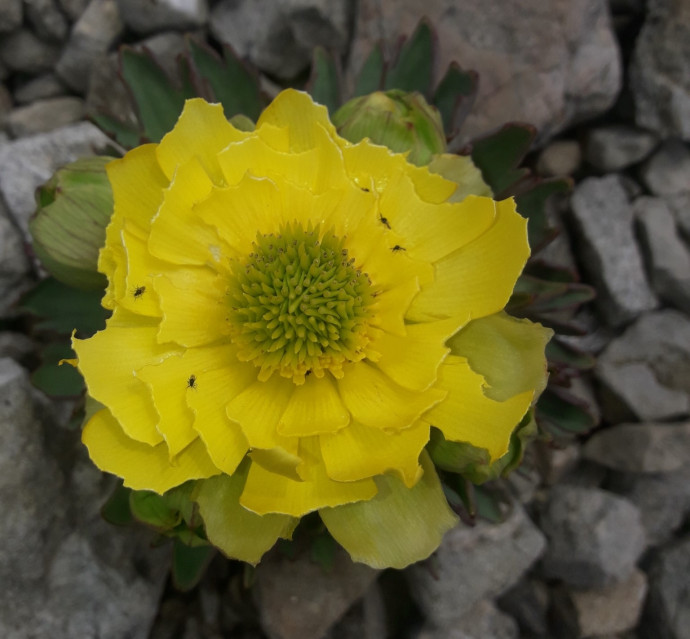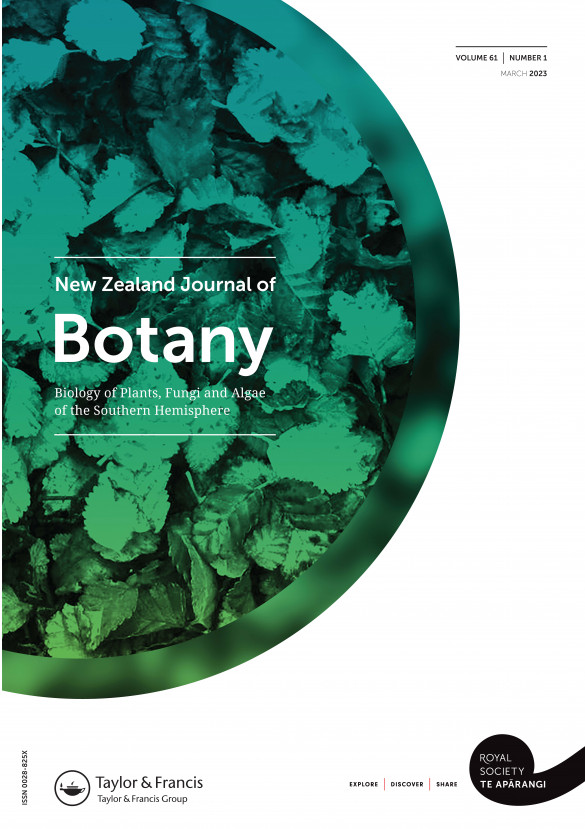News
Published 1 May 2024New Zealand Journal of Botany special issue call for papers: Systematics of the New Zealand flora

The New Zealand Journal of Botany (NZJB) is currently inviting submissions for a Special Issue titled "Systematics of the New Zealand flora." This issue seeks to highlight advances in the classification of the vascular and non-vascular plants from the terrestrial, freshwater and marine ecosystems of New Zealand.
New Zealand is a well-known global biodiversity hotspot. However, much remains to be understood about the systematics of the New Zealand flora, including its relationships, origins and classification. Crucially, an accurate understanding of the flora and its place within global biodiversity is essential for its successful management.
Techniques such as next generation sequencing have rapidly advanced in the last decade, providing new insight into closely related plant radiations whose evolutionary history was previously intractable. However, older genetic techniques, such as Sanger sequencing, and morphological analyses continue to have a place in understanding the relationships of some groups.
This Special Issue of the New Zealand Journal of Botany seeks submissions that increase our understanding of the systematics, taxonomy and evolution of the New Zealand flora. Both reviews and research articles are welcome.
Keywords
Plant systematics, New Zealand flora, flowering plants, bryophytes, ferns, algae, taxonomy, phylogeny, morphological analyses
Submission Information
Your manuscript must be submitted via the NZJB portal on ScholarOne. You will need to select the relevant special issue title from the drop-down menu in the submission process. The due date for submissions is 31 October 2024. Early submission is encouraged. A robust peer review process will be employed, and your manuscript will only be published if it successfully navigates the review process.
It is important that your manuscript is prepared according to the NZJB Instructions for Authors. Note that NZJB has a limit of 7,500 words (excluding references) for original research articles, but longer articles, including review articles may be accepted provided that the case for the greater length should be presented to the guest editors for approval prior to submission.
The complete reference style formatting can be found in this reference guide. An EndNote output style is also available to assist you.
There are no page charges or publication fees if authors publish under the traditional subscription-based model. In the meantime, Taylor & Francis partners with global institutions and funders to support researchers to publish gold open access in NZJB. If you’re affiliated with any of the 42 universities in Australia and New Zealand, or a growing range of global institutions, you may publish your articles Open Access at no cost to yourself in the New Zealand Journal of Botany.
Please direct queries to Dr Lara Shepherd, Managing Guest Editor or to the Publishing Team of Royal Society Te Apārangi.
Guest Editors
Lara Shepherd, Museum of New Zealand Te Papa Tongarewa, Wellington, New Zealand
Email: Lara.Shepherd@tepapa.govt.nz
Interests: biogeography, evolution, population genetics, hybridisation, phylogeny, systematics
Kerry Ford, Allan Herbarium, Manaaki Whenua Landcare Research, Lincoln, New Zealand
Email: FordK@landcareresearch.co.nz
Interests: Systematics of Carex; general interest in Cyperaceae, Asteliaceae and Poaceae; Floristics of the New Zealand flora
Jessie Prebble, Allan Herbarium, Manaaki Whenua Landcare Research, Lincoln, New Zealand
Email: prebblej@landcareresearch.co.nz
Interests: Plant systematics, population genetics, threatened plants
Todd McLay, National Biodiversity DNA Library, CSIRO, Parkville, Melbourne, Australia
Email: todd.mclay@csiro.au
Interests: biogeography (especially NZ-Australia exchanges), evolution, genomics, polyploidy, phylogenomics, bioinformatics

